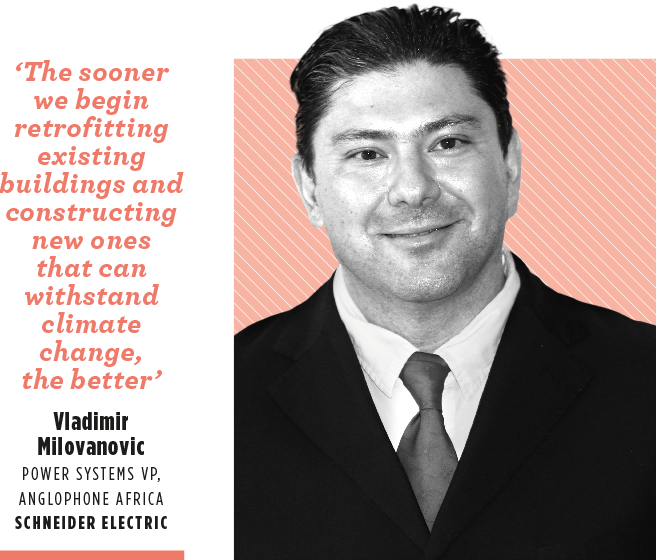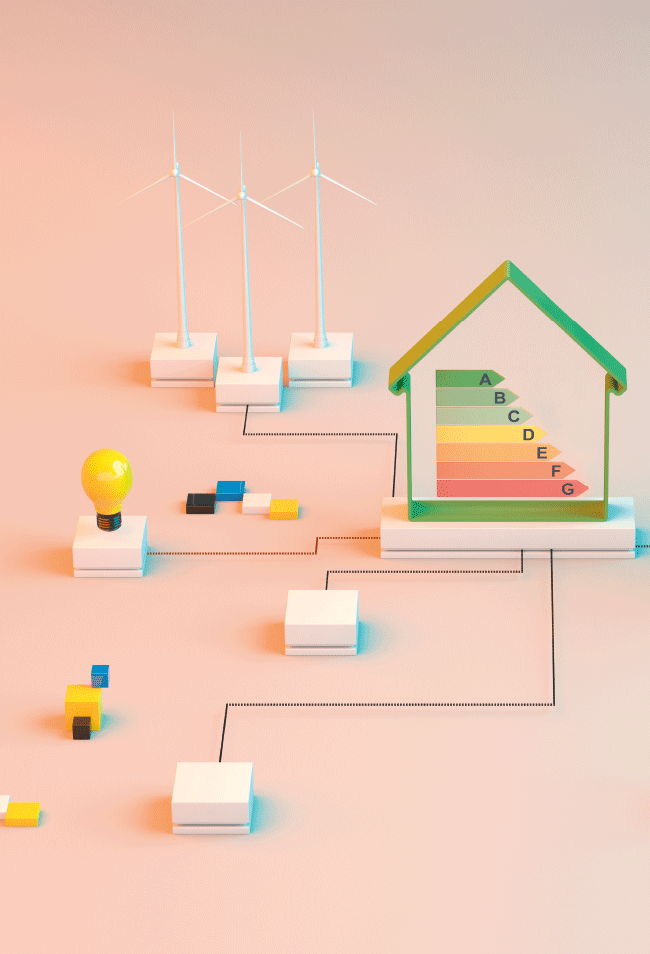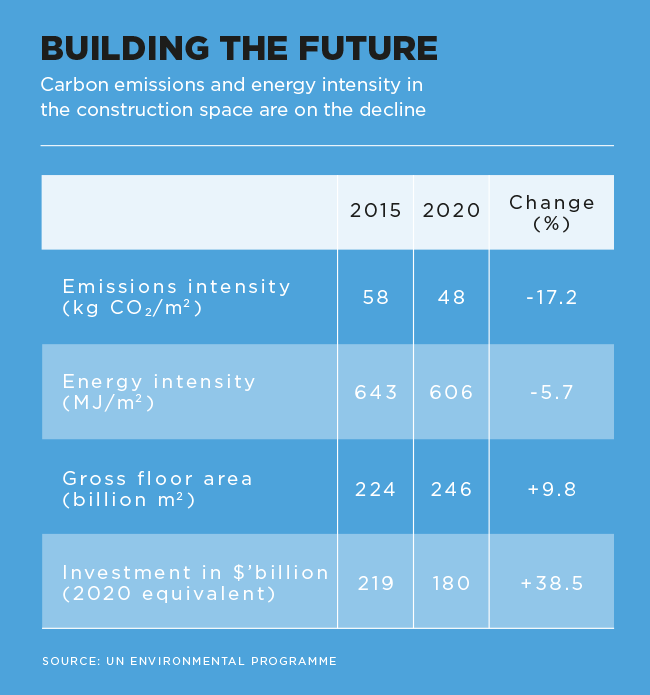That’s some weather we’ve been having lately. Amid the floods, wildfires and cyclones, Planet Earth reported $343 billion in global weather and catastrophe-related economic losses in 2021, up from $297 billion in 2020.
Commenting on those numbers, which were published in professional services firm Aon’s 2021 Weather, Climate and Catastrophe Insight report, Steve Bowen, Aon’s head of catastrophe insight, said that ‘many global communities are exposed to increasingly volatile weather conditions that are in part enhanced by the growing effects of climate change. This includes record-setting episodes of extreme temperatures, rainfall and flooding, droughts and wildfires, rapidly intensifying tropical cyclones and late-season severe convective storms. We can no longer build or plan to meet the climate of yesterday’.
Ran Boydell, visiting lecturer in sustainable development at Heriot-Watt University in Edinburgh, agrees. In a piece published by the Conversation, Boydell notes that ‘climate change is indiscriminate. Buildings are vulnerable to these impacts no matter where in the world they are, and if anything, the modern buildings of developed countries have more things in them that can go wrong than simpler traditional structures’.
Boydell believes that most buildings were built for a different world, with a different climate. And in an age of extreme weather events, propelled by the undeniable impacts of climate change, those buildings simply aren’t fit for purpose anymore. ‘The only option is to begin adapting buildings to meet the changing parameters in which they are operating,’ he adds. ‘The sooner we begin retrofitting existing buildings and constructing new ones that can withstand climate change, the better.’
Or as Ryan Colker, VP of innovation at the International Code Council, puts it, ‘we’re not getting to the baseline level of dealing with disasters and hazards that we have today, let alone what’s coming in the future’.
Chemicals giant BASF demonstrated this in a project in Breezy Point, a neighbourhood in Queens, New York City. BASF partnered with several organisations to rebuild a 1955 home that had been destroyed by 2012’s devastating Hurricane Sandy. The new building was constructed of BASF’s spray polyurethane foam (SPF), as well as graphite-enhanced polystyrene and concrete, using best practices in coastal construction and an energy-efficient design. SPF is recommended by the Federal Emergency Management Agency for homes in disaster-prone areas.
‘BASF starts with looking at building materials that are multi-functional. Spray foam is an example,’ according to Mary Poma Wiles, head of marketing for the BASF North American construction team. ‘By insulating with spray foam, we create an airtight, thermally efficient building envelope that adds overall strength to the structure, and allows us to optimise framing and other structural members. It’s about looking at the whole house rather than its individual parts.’
The result, according to Deane Evans, executive director at the New Jersey Institute of Technology’s Centre for Resilient Design, is ‘a showcase of a project that’s both sustainable and resilient’. He adds that ‘new construction has the opportunity to do a double whammy in the sense that if you design and build well, you can actually reduce the impacts of climate change through energy efficiency. If you can combine that with resilient construction at the same time, you can prevent or reduce the impacts of these hazards’.
However, climate-change resilience is about more than retrofitted buildings or green construction. Vladimir Milovanovic, VP of power systems for anglophone Africa at Schneider Electric, illustrates the extent of the problem. ‘It’s easy to identify the biggest climate threats,’ he says.
‘Coal- and oil-fired power stations pouring emissions into the atmosphere, heavy industry smoking up the sky, and the seemingly endless traffic jams of petrol- and diesel-polluting vehicles. But another enemy is standing in the way of a greener future; one rarely mentioned because it’s effectively invisible – our legacy energy infrastructure.’
Milovanovic adds that electricity grids were built long before we knew about – or understood – the threat of climate change. ‘This centralised infrastructure was designed to support a society primarily focused on economic prosperity, industry innovation and energy security, not emissions. Fast-forward to today, and we’re making progress with decentralised renewable-energy generation, with green-power capacity rising and underlying costs plummeting. On the demand side, we see more connected and energy-hungry devices – at home, at work and in industrial settings. Yet our grids remain largely the same; centralised and struggling to cope as the supply-demand or weather patterns change.
‘This situation cannot remain as it is – power systems carrying smart and clean electricity must form the foundation of our net-zero world. If we are serious about climate change, we urgently need to invest in something that isn’t much talked about unless there is an outage: the grid.’
Those challenges are driving demand for energy-efficient technologies. Studies by the National University of Singapore, published by the WEF, claim that ‘every dollar invested in energy efficiency saves about $2 in energy supply, whether that investment is made in local, on-site generation or at a grid level. It also reduces the total cost of future grid infrastructure to meet increased demand’.
The potential energy savings from smart buildings are also significant. The same report claims that basic automated building controls can save 10% to 15% of energy in commercial buildings; while energy-information management systems that ‘use advanced metering infrastructure and monitor the end-use in buildings save 3% on average, while automated fault detection and diagnostics can save an average of 9% in energy use’.
Tomerel provides a good example of energy efficiency in practice. The Belgian tomato grower recently partnered with LED lighting provider Fluence to retrofit half of their glasshouse from high-pressure sodium (HPS) fixtures to LEDs. The result was a 40% increase in light levels, and a 5% decrease in energy input.
‘The electricity efficiencies enabled us to sell 25% more energy back to the grid and also reduced our gas consumption by 5%,’ says Tomerel CEO Jelle de Ryck. ‘The plants are also thriving under LEDs. We’re seeing improved quality and production throughout the winter months, increases in stem density and improved translocation of sugars throughout the night.’

While traditional HPS fixtures produce excess heat and feature inflexible spectral options, Fluence’s energy-efficient LEDs run cooler and use a more efficient light spectrum.
‘It’s fascinating to see growers like Tomerel make innovative, smart cultivation decisions regarding energy usage,’ says Timo Bongartz, GM of Fluence EMEA. ‘The Tomerel team is saving energy wherever possible and also optimising their facility in such a way to enable them to sell energy back to the grid. And all that without sacrificing plant quality.’
There’s another part of the building process that’s now providing a surprising weapon in that fight against climate change: paint. In California, some streets have already been painted with a white coating called CoolSeal, which Los Angeles’ Bureau of Street Services claims resulted in the streets being 5.5° to 8.3°C cooler on average than others.
Yet Xiulin Ruan and his mechanical engineering researchers at Purdue University in Indiana have taken that a step further. They claim to have created a new paint that’s so white, it is measurably the coolest on record.
Using high-accuracy temperature-reading equipment, the researchers demonstrated that their ultra-white paint keeps surfaces 10.5°C cooler than their ambient surroundings at night, while cooling surfaces 4.4°C below their surroundings under strong sunlight at high noon.
Typically, commercial white paint becomes warmer rather than cooler, and paints that are designed to reject heat usually reflect only 80% to 90% of sunlight. The Purdue paint changes that.
‘If you were to use this paint to cover a roof area of about 1 000 square feet [about 90 m²], we estimate you could get a cooling power of 10 kW,’ notes Ruan in a WEF article. ‘That’s more powerful than the central air conditioners used by most houses.’
As SA shifts towards green public procurement policies, and as the Green Building Council continues to drive innovation, more and more local building projects will tap into technologies such as energy-efficient lighting, weather-resilient construction and – as they develop – technologies along the lines of actively cooling paints.
They’ll have to. Climate change is no longer a far-away threat. The impacts are immediate, and the focus now is on creating a built environment that can withstand the effects of extreme weather events, while actively working to reverse – or at least mitigate – their impacts.









